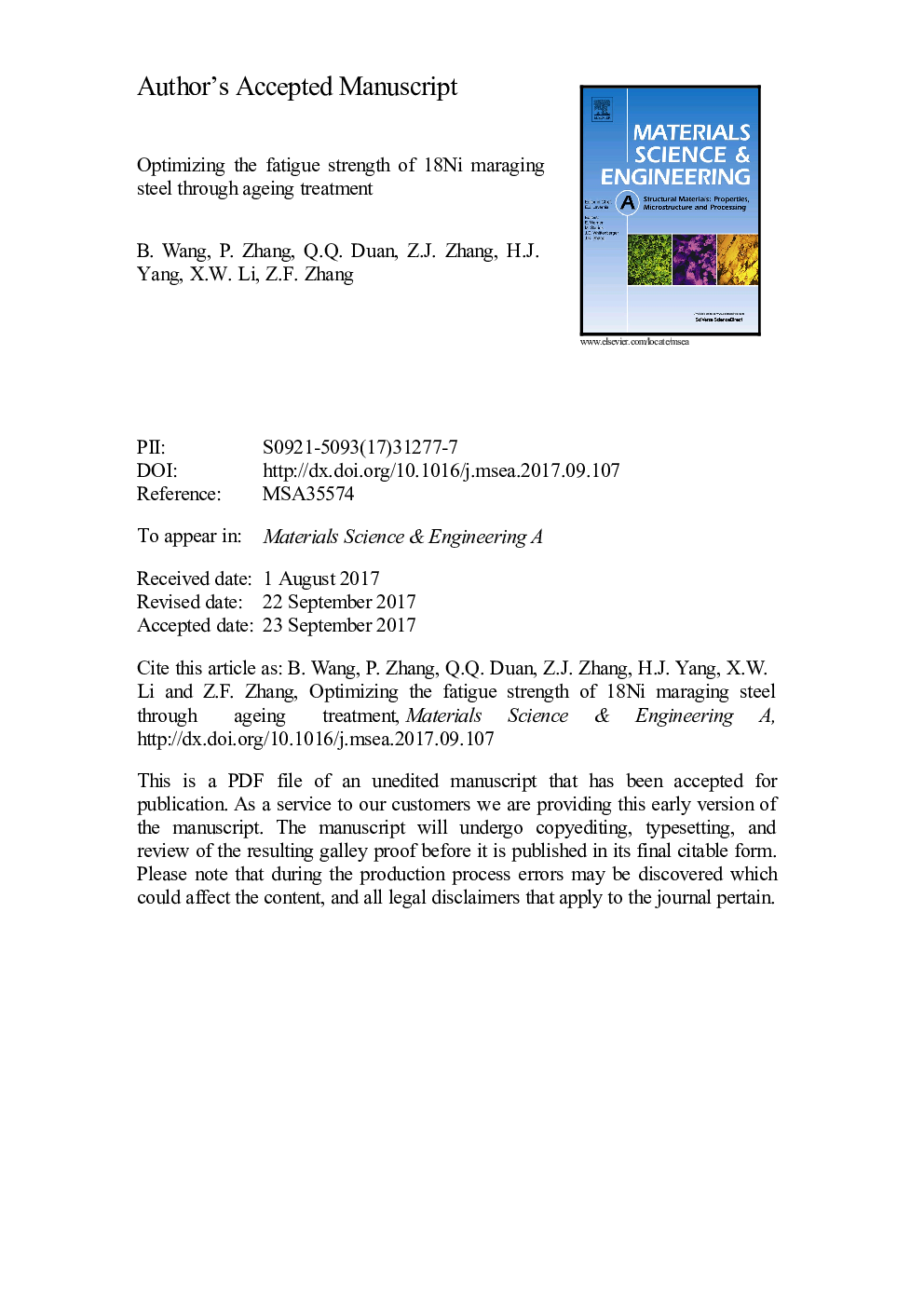| Article ID | Journal | Published Year | Pages | File Type |
|---|---|---|---|---|
| 5455278 | Materials Science and Engineering: A | 2017 | 43 Pages |
Abstract
It is confirmed that the fatigue strength of high-strength metals would not continuously increase as the tensile strength enhances. In order to find out the optimal fatigue strength of maraging steel, the tensile and cyclic pull-push (R = â 1) loading tests of 18Ni maraging steel (250 grade) aged under different conditions were carried out in the present study. Meanwhile, the fracture surface and microstructural differences were also investigated. It is detected that decreasing the ageing temperature can bring about the decrement in interparticle spacing and austenite fraction, which would further improve the tensile strength and change the tensile fracture mode. Increasing tensile strength can effectively improve the fatigue strength in the low-strength region. However, as the strength further increases, the intergranular fracture would happen, which means intense deformation inhomogeneity at grain boundaries, contrarily causing the decrement in fatigue strength. Finally, it is believed that the optimal fatigue strength can be obtained in the high-strength region where there is a transition in the fracture mode. Moreover, it is found that the specimen aged at 550 °C for 5 h with an ultimate tensile strength of 1838 MPa exhibiting the transgranular fracture possesses the highest fatigue strength of 685 MPa.
Related Topics
Physical Sciences and Engineering
Materials Science
Materials Science (General)
Authors
B. Wang, P. Zhang, Q.Q. Duan, Z.J. Zhang, H.J. Yang, X.W. Li, Z.F. Zhang,
